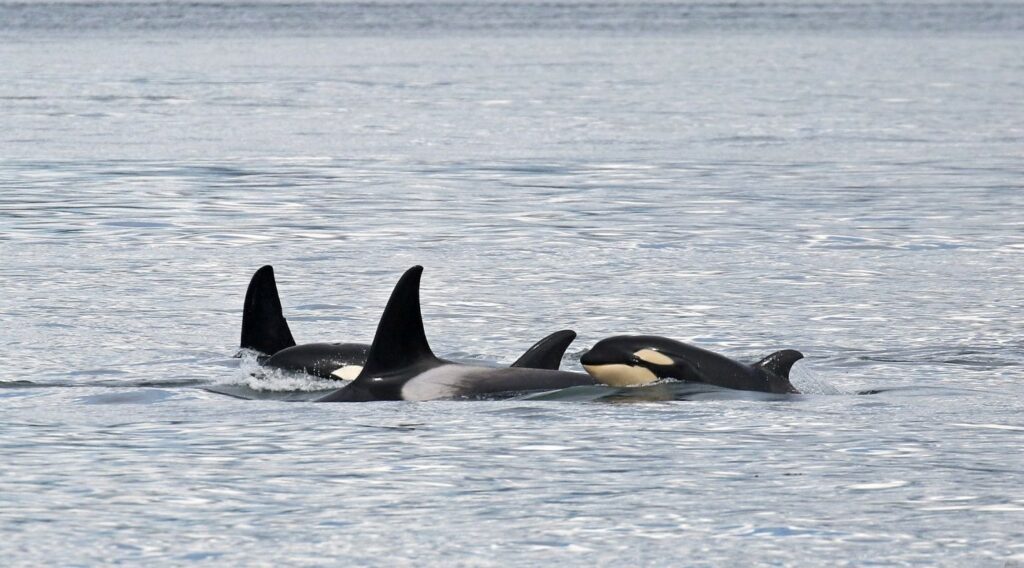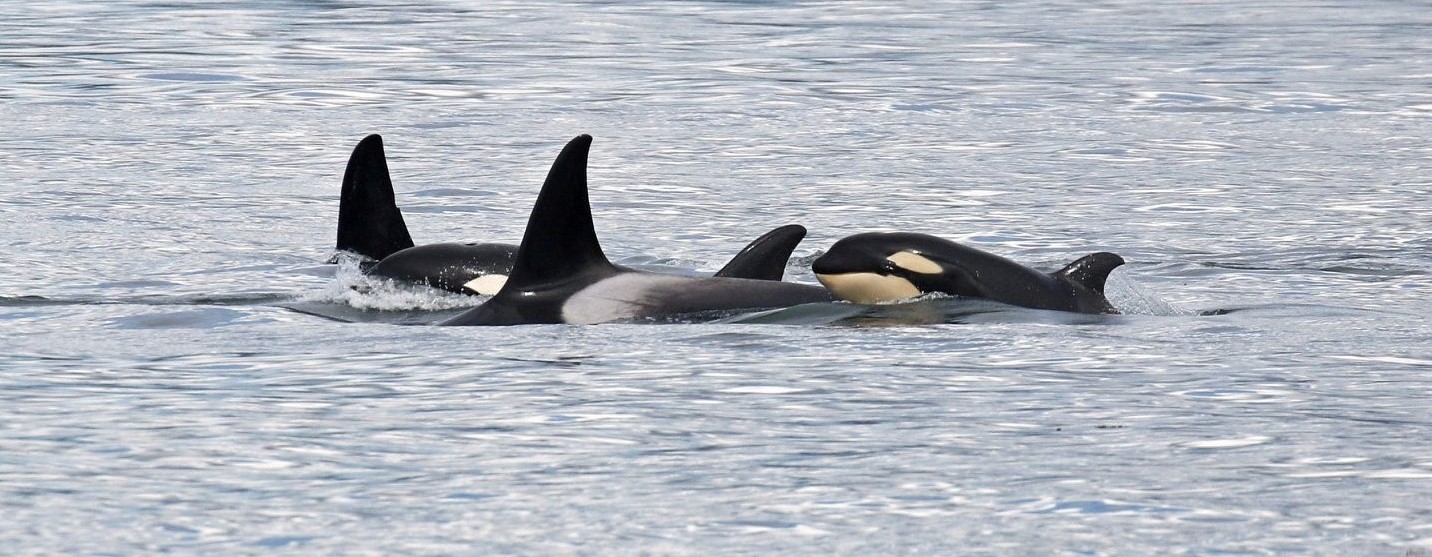A new calf brings joy after the tears. In 2018 Southern Resident Killer Whale, J-35, also known as Tahlequah, was in the world’s spotlight after tragedy hit her and her family pod. For 1600 kilometers she carried the tiny, lifeless body of her child, one ‘tour of grief’ later, she laid her baby to rest, hopeful for a brighter future – this year she lit up by greeting us with a new member of the future of J-Pod.
With a vigorous bounce back, this mother has taken on the responsibility of continuing a new generation of Southern Resident Killer Whale (SRKW) and rose to the challenge. Recovered from her grieving, Tahlequah brought new life into the world on Friday, September 4, 2020. Researchers are thrilled at the prospect of a recovering population of these incredible creatures and this new baby, J-57, is a shining beacon of hope. Occasional sightings of the youngest member of J-Pod have noted it is playful and exuberant in energy which could, hopefully, be a sign it will outlast its late sibling and grow to full adult size. With populations on the decline this is a major celebration bringing their numbers up to 73 individuals with two other females of J-Pod expecting calves later as well.

Getting Busy
The reproductive cycle of killer whales is remarkably interesting in that it can tell us facts about their environment. Female orcas have a polyestrous cycle, very similar to human ovulation, so timing can be crucial when reproducing but it can happen at any point throughout the year with ideal conditions. There have been cases, however, where we have seen females able to skip reproduction in extreme circumstances that would be considered too stressful to bear healthy young. Decreased food sources, high stress, and unsavoury water conditions can be among the reasons a female may reconsider reproducing. Most relevantly, when J-35 finally let go of her late calf she was reported to be energetic and revitalized, conceiving her new baby roughly six months after her ordeal. This is an indicator that situations are seeing enough of an improvement for conception to be possible and leading to viable young. Another interesting theory is perhaps her newest baby will have a better chance at surviving to adulthood since her body will have freshly expelled possible toxin build ups that had passed on to her previous calf. While there is still evidence to be found in this theory, it lends a silver lining to a cloud many professionals have feared would turn dark.
Ambrosia
As mammals, killer whales nurse their young for about one to two years. Orca milk has an incredibly high fat content which is necessary for the calves to quickly develop their insulative fat layer. With a fat content of 35-50%, whale milk’s consistency is often likened to toothpaste or yoghurt! As the calf grows the amount of fat may naturally be reduced based on need. Once weaned off its mother’s milk a calf will learn to hunt its own dinner but, because of the psychological dependency, a calf may suckle even after the female has stopped lactating as a it can provide comfort and reassurance. As in humans, the act of nursing acts not only as a nutritional requirement but a means of social bonding and developing communication skills. As highly social animals, this makes a difference to the whole pod. Weaning a young whale can also be prolonged or shortened depending on environmental situations such as food scarcity. Again, we see how an altered environment can impact life cycles and how these animals have adapted to adversity whether natural or man made.
Down and Dirty
The mortality rate of these endangered SRKW’s is on the rise and caused by the impact of human actions on their home surf. Malnutrition from a lack of high-quality salmon, toxins leeching through the food chain, and even noise from increasing boat traffic are all influences that affect their population. If no action were to be taken this would be the only extinction in the world where we know every individual’s name.
So, what ARE we doing about it?
SpringTide is heavily involved in the Sooke River Chinook Revitalization Initiative thanks to generous funding from owners, Dan and Joanne Kukat. The aim of this initiative is to breed and stock healthy Chinook Salmon as a food source for the SRKW by letting them grow into fair sized (2.5 -3 inches) smolts before releasing them into the wild. By allowing a large healthy population of fish to grow to a size like that in captivity means they have far better chances of surviving in the wild once released, ultimately growing into a primary food source for many Salish predators.
On top of that, the Government of Canada has released regulations for whale watching, fishing, and recreational vessels. With most wildlife such as Humpback Whales or Bigg’s Killer Whales, boats are required to turn off their engines within 100 meters. However, as SRKW are endangered the regulations state to give them a whole 400 meters of space. This reduces the impact of noise and the temptation to get closer, disrupting valuable hunting and feeding behaviors. While the long-term effects of efforts such as these is unknown at this time, with the addition of a new baby in the family, things are looking promising and we can always work towards a healthier ocean.
Welcome to Plant Earth, little one!
—————–
Morgan Uhlmann
Crew Member at SpringTide Whale Watching & Eco Tours
—————–

